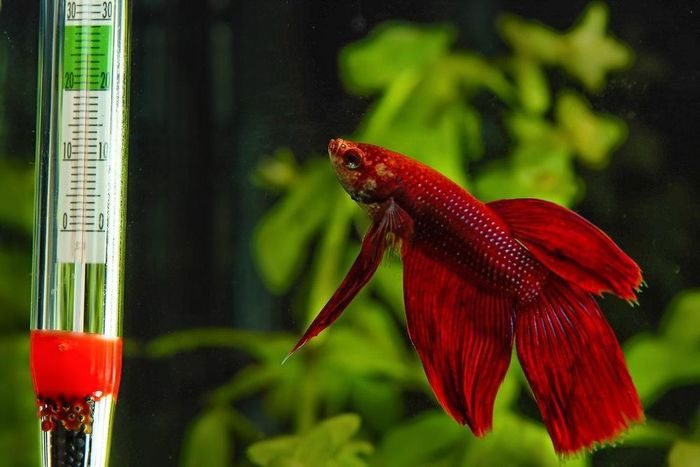A unique 24-year study on freshwater fish recently published in the journal eLife has challenged the hypothesis that aquatic creatures like fish will decrease in size due to global warming.
The study indicates that warm water increases both growth rates and mortality rates, resulting in larger fish populations with “younger” age profiles. This finding partially contradicts common predictions about the impact of global warming on natural ecosystems, highlighting the need for more rigorous large-scale experimental validation of hypotheses.

Warm water increases both growth rates and mortality rates of fish.
As underwater ecosystems warm, it is predicted that animal species like fish will grow faster when young but will have smaller adult sizes. This bias has primarily been observed in small-scale experiments. Although some studies have tested this prediction in natural environments, they have mostly focused on commercially caught fish, where fishing practices may influence growth rates and body sizes.
The author of the scientific work, Max Lindmark, a researcher at the Swedish University of Agricultural Sciences, stated: “Studies on the effects of warm water on fish from large-scale, semi-controlled experiments in natural environments are very rare, but they can provide fascinating insights. We used a unique research system to investigate how exposure to warm water has altered mortality rates, growth rates, and fish sizes across many generations.”
The team conducted their research in a closed coastal bay receiving cooling water from a nuclear power plant. As a result, the water there is warmer by 5 – 10°C compared to surrounding waters. They compared Eurasian perch species from the closed bay and a reference area in a nearby archipelago over a 24-year period. They combined catch data with age-specific length measurements of the fish, then analyzed them using statistical software to investigate how warm water exposure affected the lifespan and size of the fish populations, as well as their growth rates and mortality rates.
While the researchers found statistically significant differences in estimated growth rates, mortality rates, and sizes of fish populations between the warm water affected area and the reference area, not all of these changes aligned with their expectations. Although female perch in the warm water area grew faster, they did not stop growing upon reaching maturity as the theory predicted; instead, they continued to grow throughout their lives.
Consequently, these fish in the warm water area reached larger sizes for their age, specifically about 7 – 11% larger when compared to fish of the same age in the reference area. Furthermore, the authors noted that the increase in growth rates of young fish in the warm water area was so pronounced that even with higher mortality rates (due to warming water) leading to a younger average age in the fish population, the average size remained greater than that of the reference area. This trend contradicts predictions that global warming would reduce fish populations over time, particularly those of larger sizes due to longer lifespans. Instead, this study suggests that warming ecosystems have produced “younger” but larger fish.
Co-author Malin Karlsson, Director of Water Environment at the Department of Nature and Environment (Västmanland County, Sweden), remarked: “Our study provides strong evidence of the differences caused by warming in growth rates and mortality in the natural populations of an untapped temperate fish species exposed to water temperatures rising by 5 – 10°C over two decades.”
Author Anna Gardmark – Professor at the Department of Aquatic Sciences, Swedish University of Agricultural Sciences concluded: “These findings emphasize that general predictions based on theories such as the temperature-size rule are not necessarily universal. Thus, caution should be exercised when using them to predict large-scale changes. The findings also indicate that both mortality rates and growth rates are crucial when studying temperature effects. Although we have only studied one species, this unique climate change experiment shows the impact of warming exposure at the scale of entire ecosystems. This makes the findings of the study highly relevant in the context of global warming.”


















































